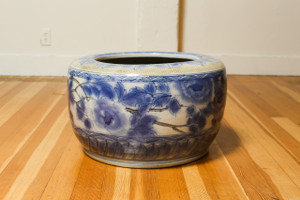

The history of the hibachi is deeply rooted in Japanese culture and tradition, dating back centuries. Originally, the term "hibachi" referred to a portable heating device consisting of a charcoal brazier set into a box or container made of wood, ceramic, or metal. Historically, hibachis were used for various purposes, including cooking, heating, and providing light. They were commonly found in Japanese households, tea ceremonies, and outdoor gatherings.
Over time, the hibachi evolved from a utilitarian household item to a symbol of Japanese craftsmanship and aesthetic refinement. Skilled artisans began crafting hibachis with intricate designs and decorative motifs, transforming them into objects of beauty and cultural significance.
By the late 19th and early 20th centuries, hibachis became popular decorative pieces in Japanese homes and were often adorned with elaborate porcelain or ceramic artwork. The hibachi depicted scenes from nature, folklore, and daily life, reflecting Japan's rich artistic heritage.
The vintage Seto porcelain hibachi from 1880 exemplifies this evolution. Adorned with a serene mountain view, a traditional Japanese cabin house nestled among pine trees, and delicate cherry blossom accents, it captures the essence of Japan's natural beauty and cultural heritage. With its blue and white color scheme, this hibachi embodies the timeless elegance of Seto porcelain craftsmanship.
Today, while modern heating and cooking methods have largely replaced traditional hibachis, they remain treasured collector's items and symbols of Japanese craftsmanship. Vintage hibachis continue to captivate enthusiasts with their historical significance and timeless beauty, preserving a piece of Japan's cultural legacy for generations to come.
12" diameter x 10'H